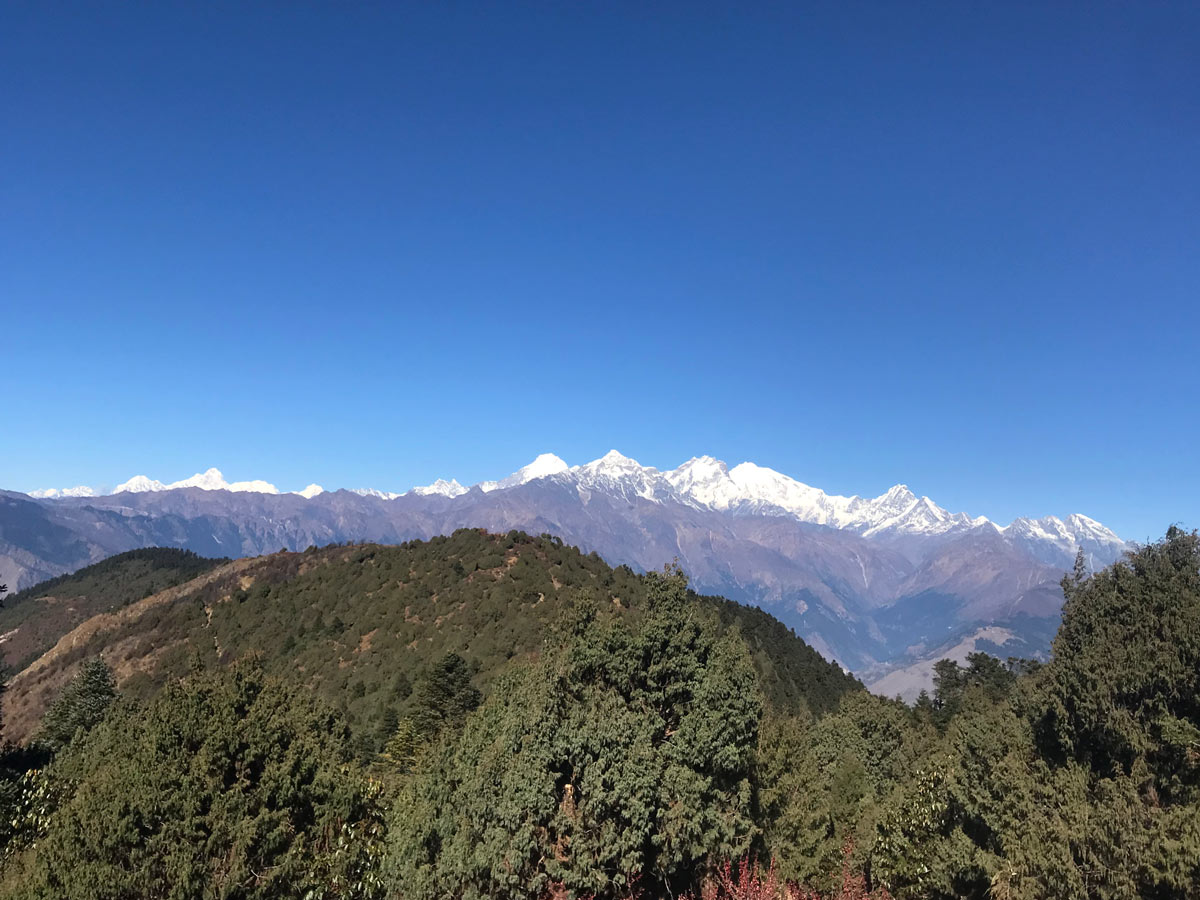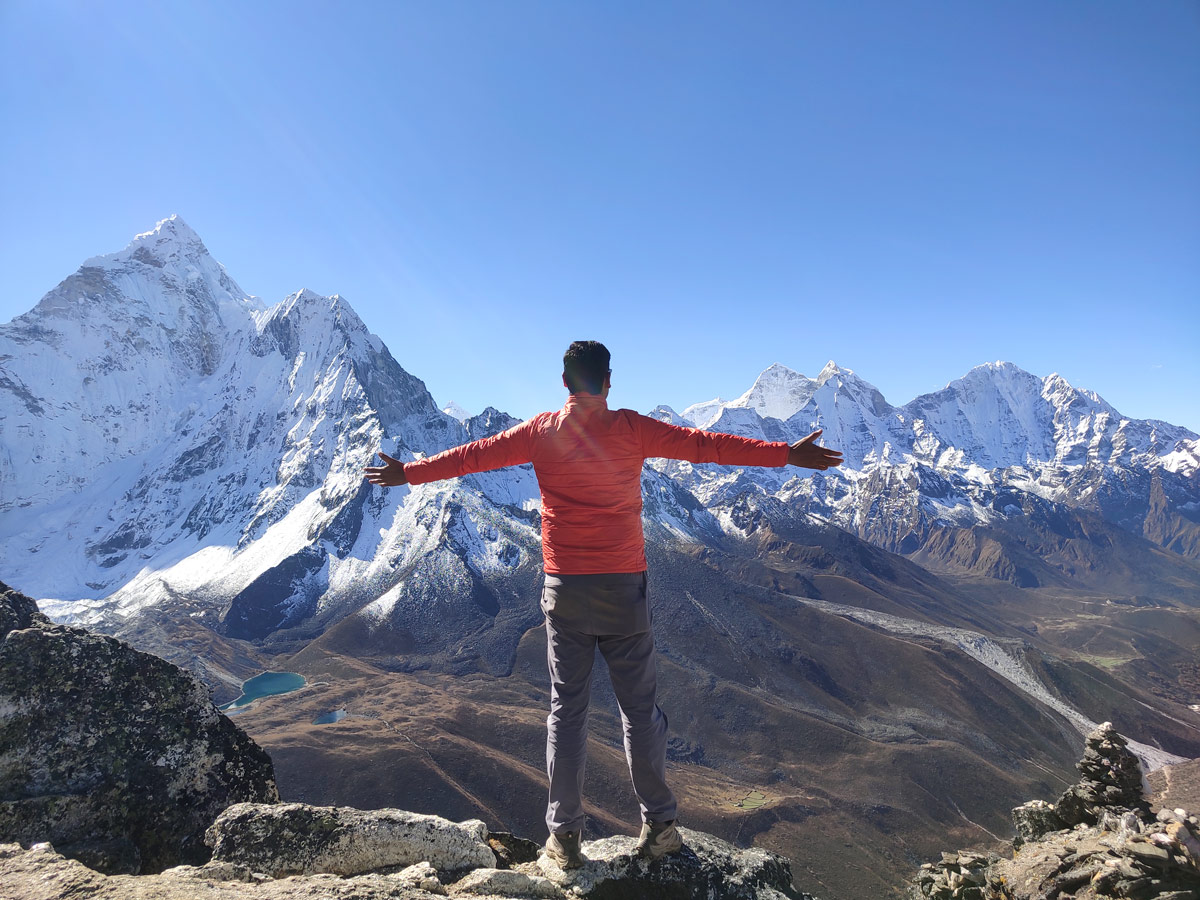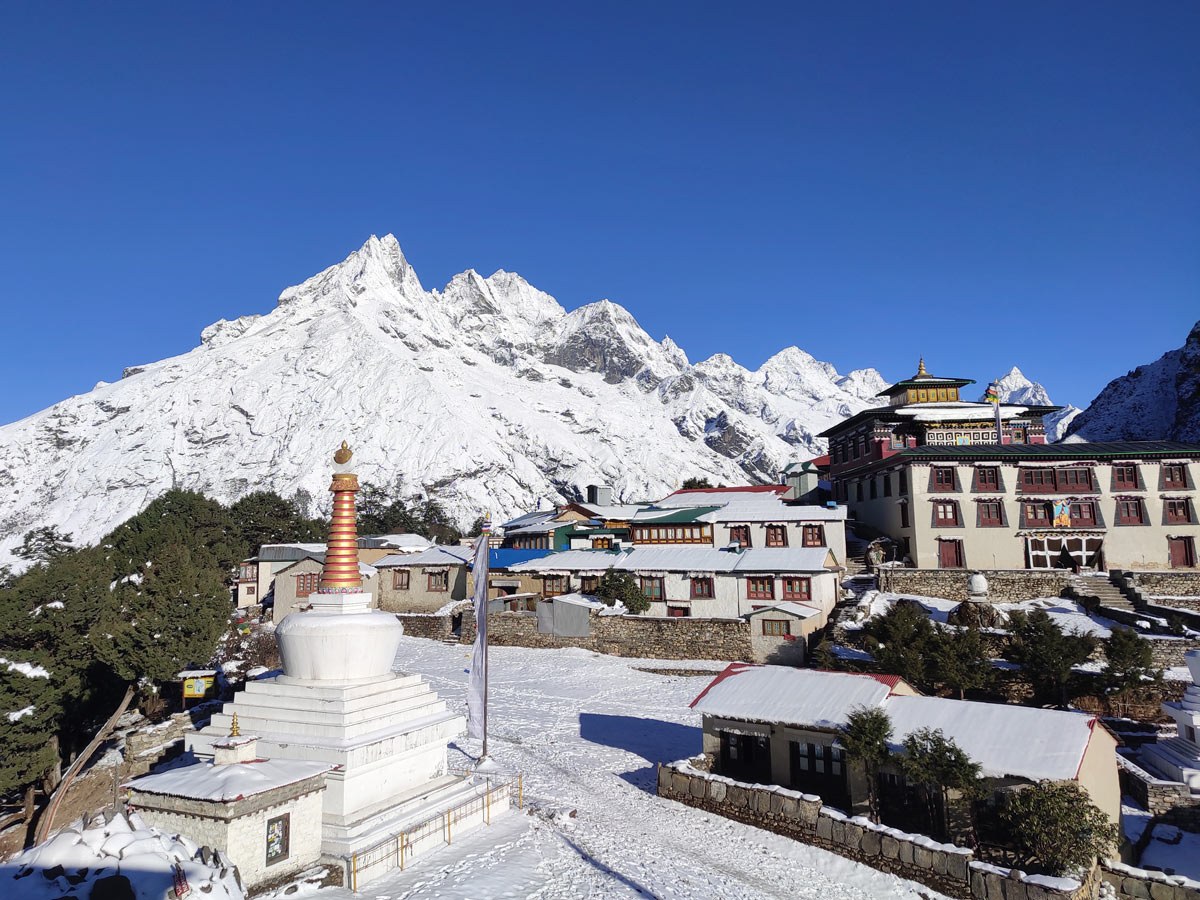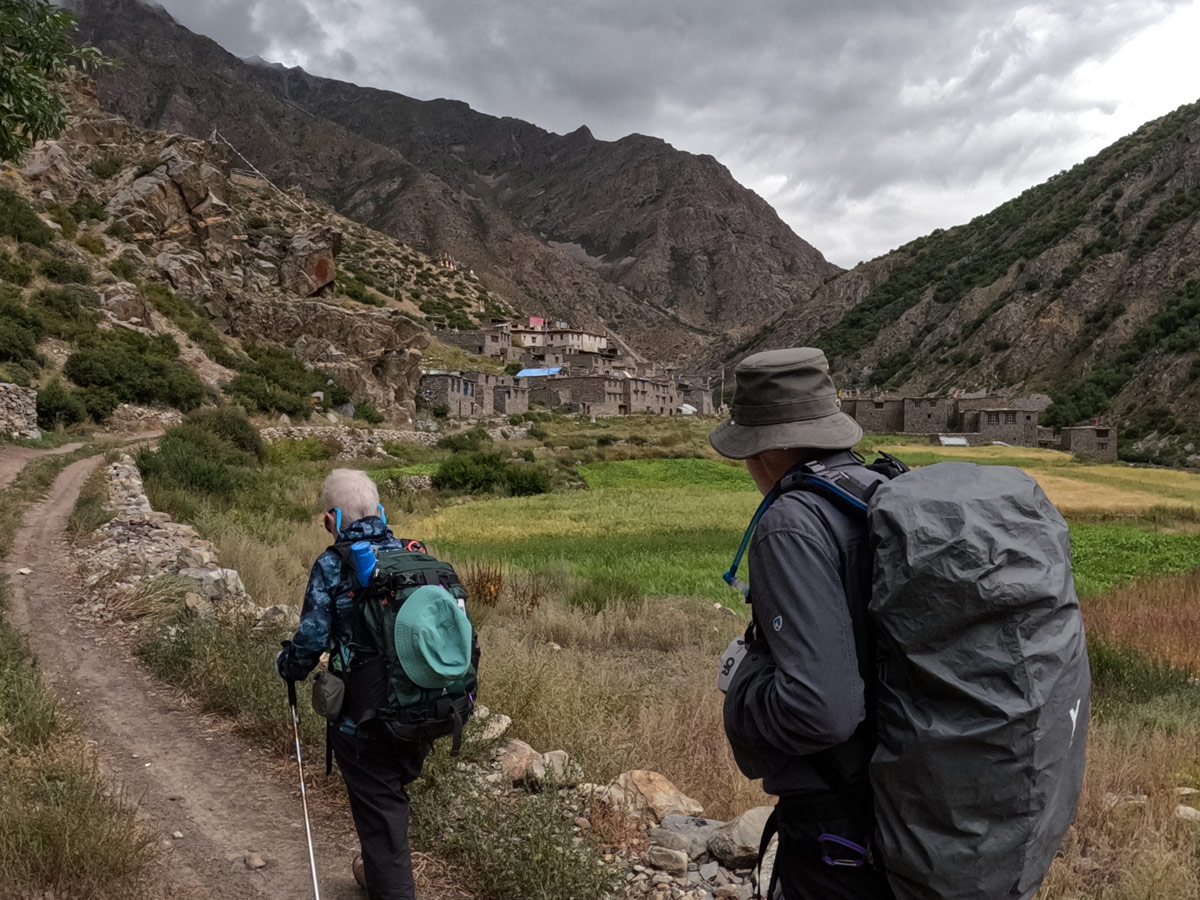While exploring the magic of the national parks of Nepal, the Langtang National Park is a serene yet vibrant addition to the list. Located north to the bustling valley of Kathmandu, this is the closest Himalayan adventure from the valley.
This national park located in the Himalayas is also known as Nepal’s first Himalayan National Park and is home to several flora and fauna along with people with high cultural values.
A tandem of nature, culture, and biodiversity, this national park is truly a charm where every path leads to stunning vistas. Let’s explore more about the allure of Langtang National Park in this blog.
Overview of Langtang National Park
Geography and Ecosystems
Spanning over an area of 1710 sq km with a buffer zone of 420 sq km, the Langtang National Park is located in the Central Himalayan region and covers districts in the southern mountainous terrains of Nepal-China border.
Established in 1976, this is in a comparatively close proximity to Kathmandu and features an altitudinal range of 1,000 m to 7,245 m at Langtang Lirung.
Given its unique positioning, the Langtang National Park features a topography more diverse than any other ranging from lush subtropical forests and breathtaking valleys to alpine meadows and icy glaciers, finally culminating into snowcapped peaks.
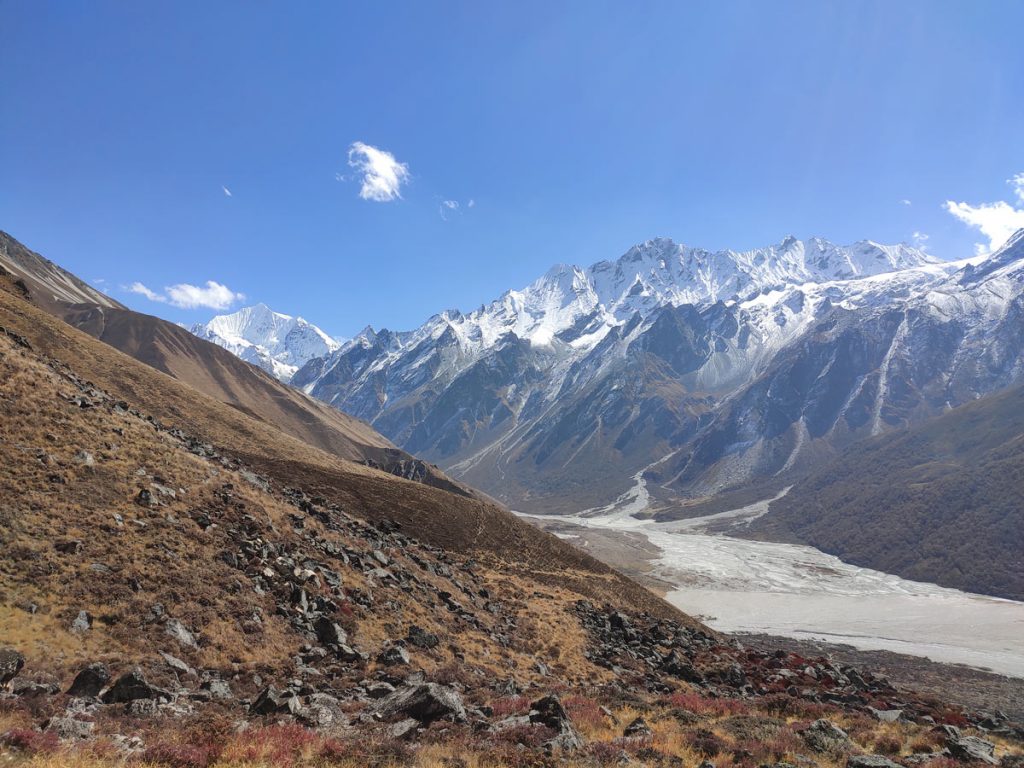
The region experiences several climatic zones with temperate zones in lower region to crisp mountain air and permanent snow as you ascend through the park.
The mighty Trishuli river and Bhote Koshi make their way through the landscapes of the Langtang national park while Langtang River flows in the midst contributing to sustaining the vibrant ecosystem while sculpting valleys in the region.
The Langtang National Park is a beautiful mix of raging rivers, serene lakes, and rugged valleys, all positioned under the mighty snow-capped peaks keeping a watch over the region.
The park is surrounded by Shivapuri National Park in the south, Manaslu Conservation Area in the northwest, and Sagarmatha National Park to its east.
With 68 named mountains, this national park is a haven for mountain enthusiasts not wanting to go much farther from the capital city.
Some of the renowned peaks of the Langtang National Park are Langtang Lirung (7,227 m), Langtang Ri, Ganchenpo (6,378 m), Dorje Lhakpa (6,966 m), Yala Peak (5,520 m), Risum, Loenpo Gang, and Phurbi Chachu.
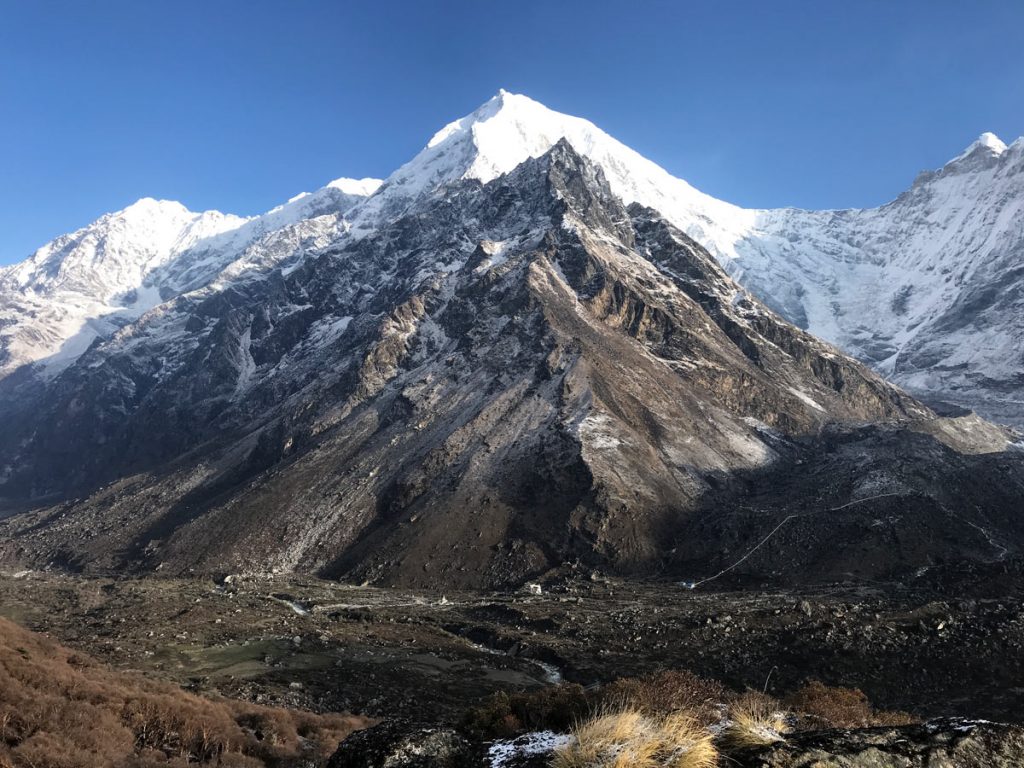
Also known as the ‘valley of glaciers’ the Langtang National Park features several glaciers like Yala glacier, Lirung glacier, Barun glacier, Yalung glacier, Langtang glacier, and Langtang Ngojumba glacier.
Flora and Fauna
Langtang National Park is a sanctuary for diverse flora and fauna spread across a variety of zones within the 6,245 m altitude gap like sub-tropical, temperate, lower sub-alpine, alpine grassland meadows, and high meadows.
The lower regions feature sub-tropical forests teeming with different flora while being characterized by Sal Forest. This transforms into the hill forest as you go a little higher consisting of Chirpine, Rhododendrons, and Nepalese alder.
Beyond this lies the oak forests and forests of silver fir, hemlock, and larch. The region features different species of Rhododendron like R. barbatum, R. arboretum, and more coloring the landscape with their crimson hues.
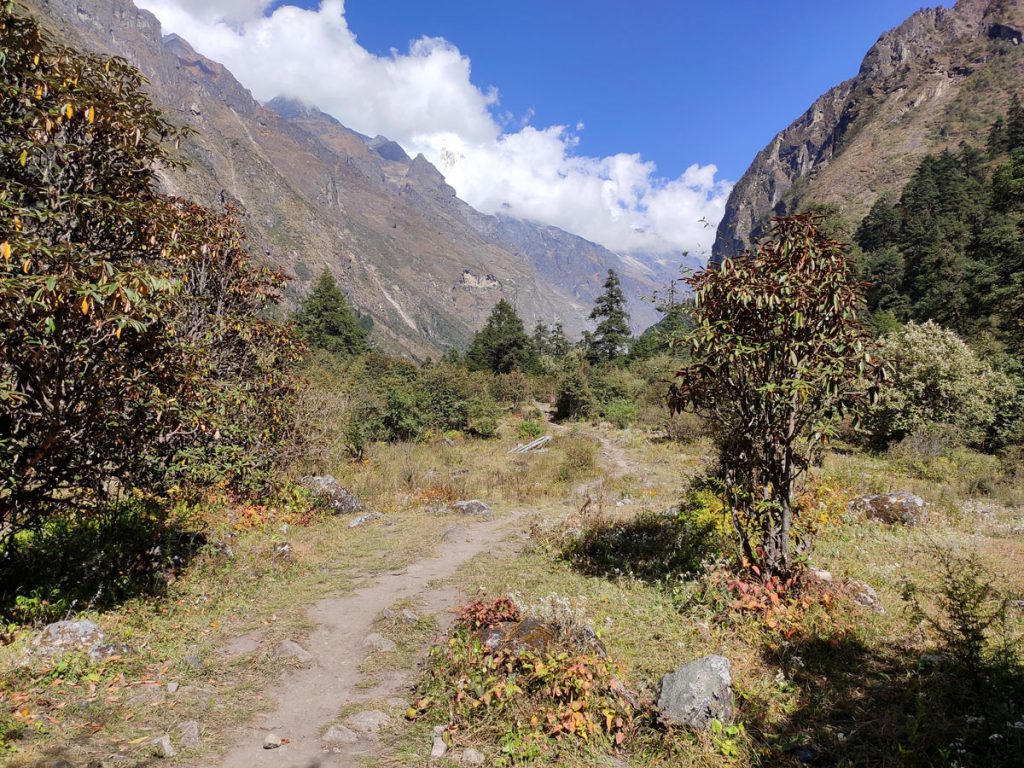
As you approach the tree line, lush vegetation of tree species like birch and silver fir dots the landscape.
Beyond the tree line, the juniper and rhododendrons transform into alpine grassland meadows given the high altitude finally dissolving into the permanent snow line.
The region is also home to numerous ungulate species like the musk deer, Himalayan thar, red panda, snow leopard, wild dog, Himalayan black bear, Ghoral, and serow to name a few.
The playful langur monkeys add a touch to whimsy to the eye-soothing landscapes of the region.
The skies of the region are ruled by the likes of Himalayan griffon and 250 species of birds making the region a haven for birdwatchers.
Cultural significance
Langtang not only features a mosaic of landscapes and biodiversity, but it is also home to a rich cultural tapestry featuring the Tamang and Sherpa community with a hint of Tibetan influence.
The region is also home to the Hyolmo community who reside in the Helambu region. The Hyolmo community is one of the 59 indigenous groups recognized by the Government of Nepal, making them quite unique to the region.
The cultural heritage in the region is woven by the vibrant Buddhist culture which is evident by the monasteries and fluttering prayer flags dotting the region acting as a testament to the faith of the people in the region.
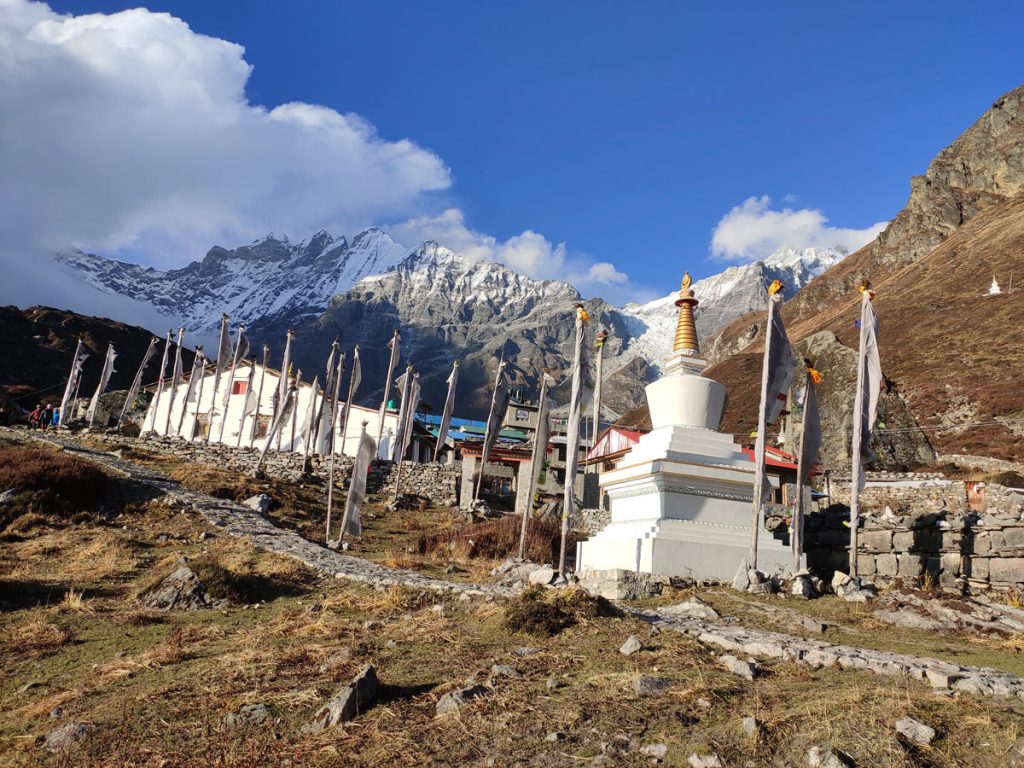
Thriving with nature, the Tamang people have called the Langtang region home for a long time. The Langtang National Park has several Tamang villages scattered across it.
In monasteries like Kyanjin Gompa, the cultures further come to life during local festivities where you can witness the traditions of the Tibetan-influenced Buddhist community.
Besides that, the region also displays the Hindu cultures as a lively festival takes place at the main attraction of the region- the Gosaikunda Lake every year in August attracting several Hindu pilgrims to the region.
Major Attractions in Langtang National Park
Langtang Valley
The Langtang Valley lies at the heart of the Langtang National Park and this Himalayan valley is one of the main attractions of this region. It is the culminating point of some of the famous trekking routes in the region.
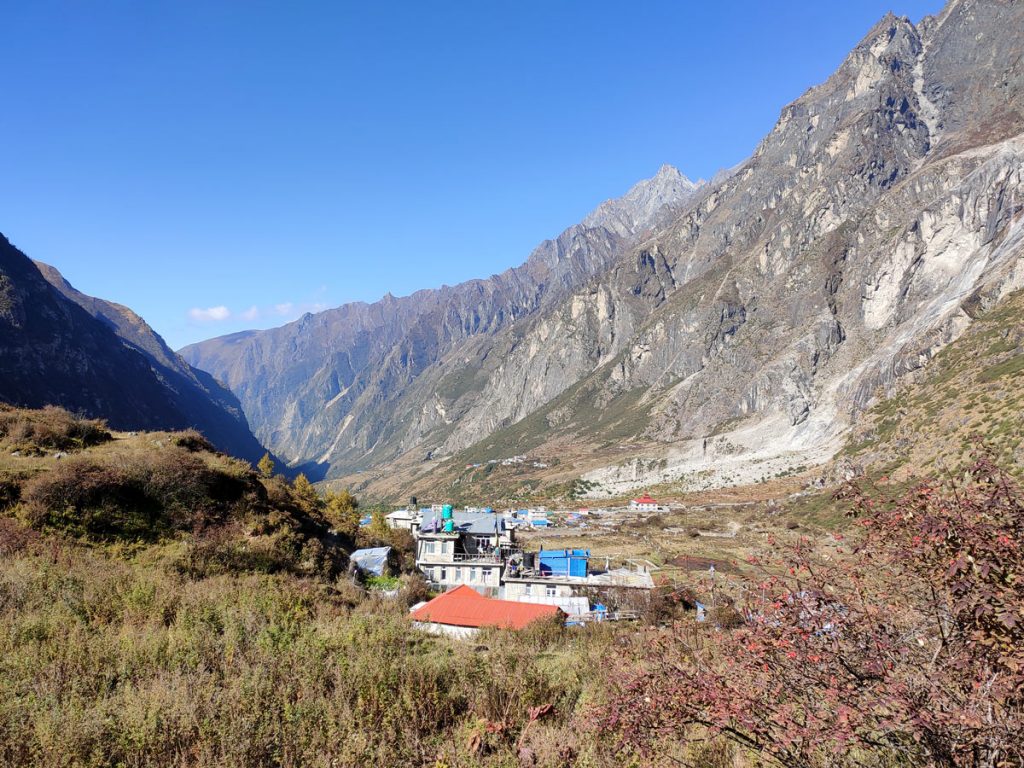
This valley is not just known for its natural attractions but is also considered to be a hidden valley blessed by Guru Padmasambhava making it a sacred place for Buddhists.
The valley is also home to peaks like Kaynjin Ri, Tsergo Ri, Dorje Lahkpa, and Langtang Lirung some of which are also open for mountaineering expeditions. It is also known for the delicious swiss-cheese produced in the region.
Gosaikunda Lake
A sight to behold, the Gosaikunda Lake is a natural as well as cultural heritage of the Langtang National Park as this crystal-water lake is considered as a pilgrimage for Hindus as well as Buddhists.
It is believed that this lake was created by the Hindu diety Lord Shiva. Therefore, during the festival of Janai Purnima, usually in August, a festival is organized here where thousands of devotees gather together to dip in the chilled waters of this lake.
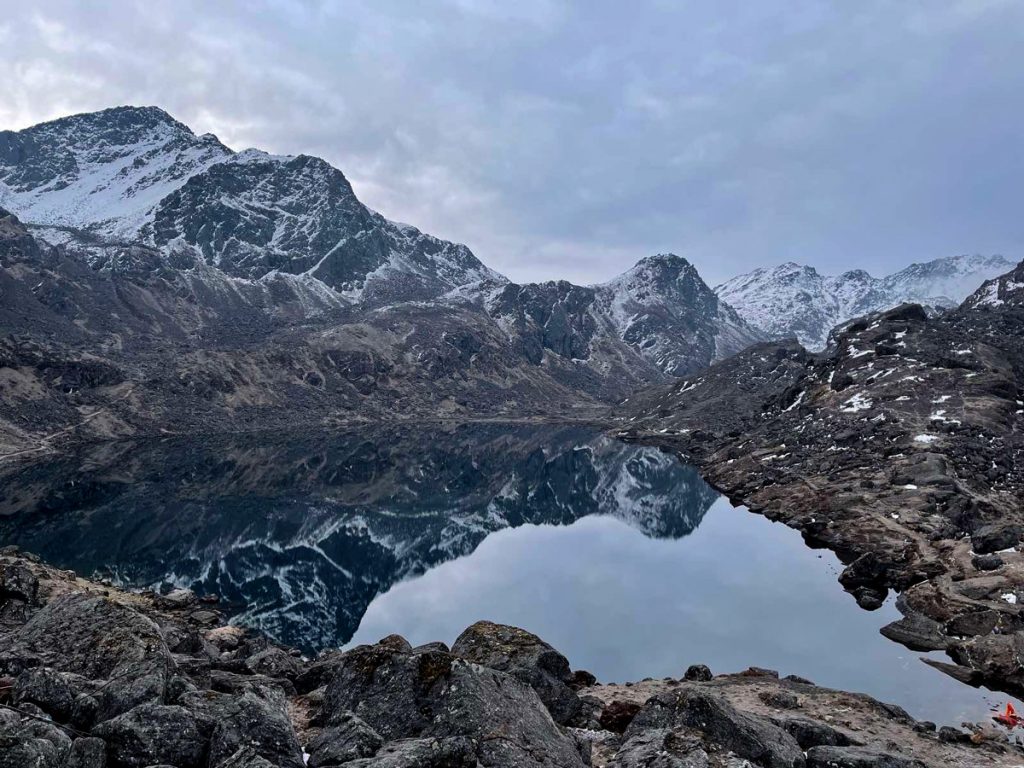
Surrounded by the breathtaking snowcapped peaks, the view from this lake is truly a sight to behold. The waters of this lake turn icy during winters adding to the beauty of this lake.
This glacial lake with its reflection of the sky and the surrounding peaks also features a trekking route providing a moment of tranquility and serenity to trekkers as well as pilgrims.
Trekking Routes
Trekking in Langtang National Park is a treat for the trekkers as it features several trekking routes all dotted with stunning landscapes while catering to the needs of every level of trekker from beginner to professional.
On top of that, the region is a merely 5-7 hours drive from Kathmandu Valley making it one of the closest Himalayan experiences to the capital city. Therefore, trekkers need not hassle a lot to fulfill their dreamy Himalayan adventure.
The third most popular trek in Nepal after Annapurna Circuit and Everest Base Camp, the Langtang Valley trek is the highlight trekking route in this region.
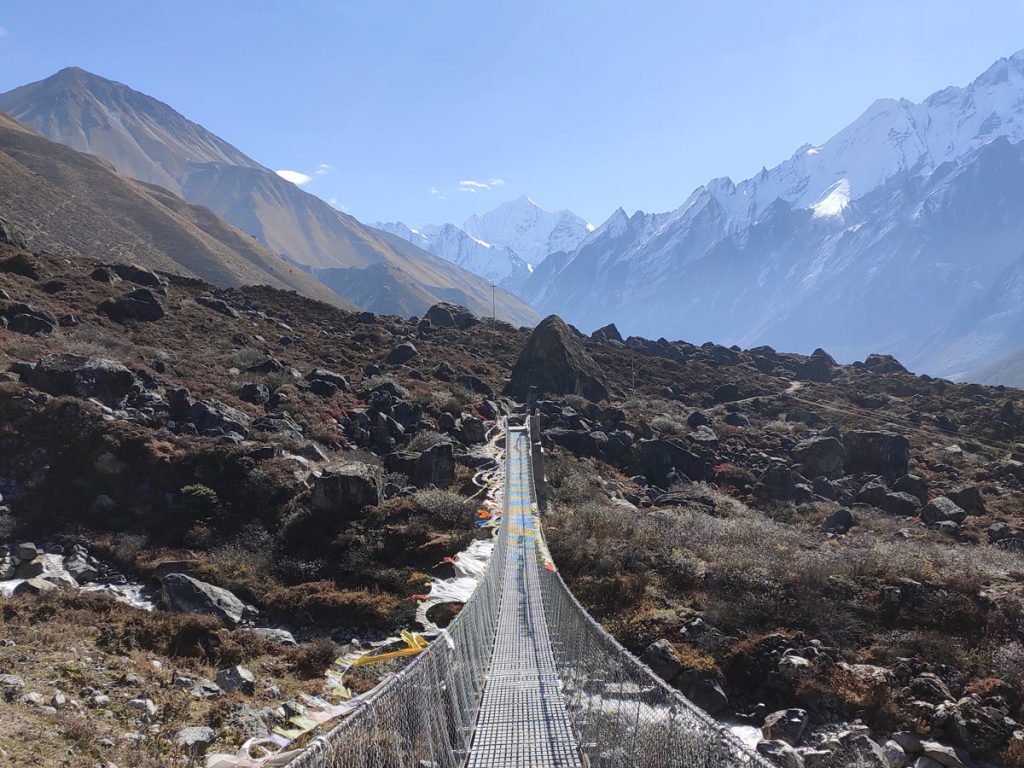
The Langtang Valley trek takes you to the heart of Langtang while traversing through stunning landscapes and offering breathtaking vistas of the snowcapped giants of the region including Langtang Lirung.
This is a moderately difficult trek with most of the itineraries starting from Syabru Besi and going all the way up to Kyanjin Gompa before retracing the steps back. The trail is dotted with teahouses featuring warm hospitality of the locals.
Gosaikunda lake also features a trekking trail revolving around it which can be undertaken as an independent trek or combined with other points like the Langtang valley.
The Gosaikunda lake trek is a short trek with moderate difficulty taking the trekkers on an exploration of the majestic Gosaikunda Lake.
For those wanting a blend of wilderness and adventure, the Ganja La pass trek is the answer as it is a slightly more difficult trekking route with a hint of adventure as trekkers cross the Ganja La Pass at 5,130 m.
This trek requires more preparation and time as opposed to the other treks as acclimatization is a requirement for this challenging trek.
Another culturally rich trekking route in this region is the Helambu trek which allows the trekkers to embark on a short adventure coated with the cultures and traditions of the region.
The trek is usually a 5-day adventure taking the trekkers through Chisopani, Kutumsang, Thadepati, Sermathang, and culminating at the Melamchi Pul Bazaar in the Helambu region.
For those wanting to get the best of all worlds, you can also go on combined trekking routes like the Langtang Valley Ganja La Pass trek or the Langtang Helambu trek.
The Tamang Heritage Trail presents a more culturally enriched side of the Langtang National Park as it allows you to get a deeper glimpse into the traditions of the Tamangs and indulge in their warm hospitality.
Planning your visit
Permits and Regulations
The Langtang National Park is considered a conserved area under the efforts of Nepal government to protect the fragile ecosystem of the region and ensure sustainable tourism.
Therefore, certain rules have been put in place regarding visiting the area. Visitors will need a Trekker’s Information Management System (TIMS) permit and a Langtang National Park entry permit to enter the region.
You can acquire these permits from Kathmandu or from the entry point of the national park at Dhunche. A certain amount must be paid to acquire the permit based on your nationality.
Packing Essentials
A convenient exploration of the Langtang National Park demands thorough packing and preparation from the visitors as it throws several challenges at the visitors.
For those planning to explore just the lower regions, it might still be an easy journey. But for those wanting to explore challenging altitudes like the Ganja La pass, altitude and weather can both be significant challenges.
The Langtang region does feature several teahouses and lodges, but they might not have your familiar comforts in the rugged terrains of the region. Therefore, it is important that you pack thoroughly.
Clothing essentials suitable for layering are a must from thin base layers to warm outer layers to tackle any unexpected weather challenges. Besides this, a first aid kit, good shoes, essential documents make up your must-haves.
Toiletries, sunglasses, sturdy bags, sun protection, jackets, and a camera for capturing your adventure pretty much does the job.
For those visiting the region for a trekking adventure, you will have a more elaborate packing list. Therefore, make sure to consult your tour operator and get a packing list.
Best time to visit Langtang National Park
Different seasons in the Langtang National Park unfold different perspectives of the region. To know what to expect during your journey, it is good to know what each season in the region looks like.
The months of September to May feature lush forests in the region with usually dry weather except for January and February where one might experience snowfall.
By April, the country welcomes Autumn where the region bursts into beautiful hues of red, white and pink as different species of rhododendrons start dotting the landscapes.
Accompanying this are the towering canopies of fir and oak forests amidst the warm weather.
June marks the beginning of monsoon as the skies become heavy with rains making downpour a possibility at any given time. This continues till August while the month of September witnesses a spectacular display of wildflowers in the region.
The best time to visit the Langtang National Park is during Autumn (September to November) and during spring (March to May) as the weather and the trail conditions are good during these seasons.
They also enhance visibility in the region accompanied by the clear skies and unobstructed views and highly active flora and fauna. Certain trekking trails like the Ganja La pass are also open for trekking only in autumn and spring.
Monsoons might make the trails slippery and uncomfortable for the visitors to tackle and winters might bring along snowfall and extreme temperatures.
However, the region also sees significant crowd in the month of August during the ending of monsoon as the festival at the Gosaikunda Lake takes place attracting lots of pilgrims.
Additional Tips
- Adhere to the principles of sustainable tourism and stick to the marked trails and minimize waste. Strictly follow the ‘leave no trace policy’ in this conserved area.
- Do not disturb the wildlife and enjoy them from a distance.
- Understand the local Tamang cultures and traditions and show respect by following simple things like dressing modestly and maintaining sanctity at the religious places.
- Include a small detour to one of the various cheese factories in the region to experience the traditional cheese making process and sample the delicious local cheese. Take some home if you like it!
- Panch Pokhari, east of Helambu, the toe of Langshisa glacier, and upper-level valley from Kyanjin can be some of the remote adventures to add to your list if you are more of an adventurous person.
Conclusion
The Langtang National Park is a natural and cultural beauty while being an equally fragile ecosystem.
Therefore, as we wander through its landscapes and connect with the warm and hospitable people, let’s make lots of memories and leave behind nothing but our footprints.
